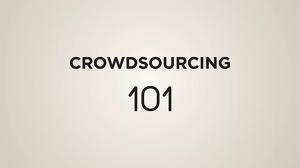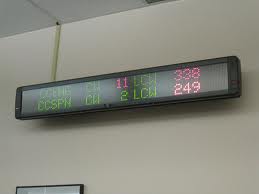
Climate chaos wreaks havoc again…
Once again, the Champagne family has fallen victim to climate change in the Northeast, or at least two unfortunate weather incidents, whichever your personal/political inclinations require. First came hurricane Irene, and then, last week, the early fall snowstorm. Fortunately for me, I only suffered two days without power, as I was traveling on business for the week. Unfortunately for my family, they were asked to endure almost a week without power, as the outages in the Northeast lingered and local utilities struggled to get customers back in service. But, as of last night, the lights have come back on and life has gotten more or less back to normal.
As I wrote a few weeks back in my “Eye of the Storm” post, nearly every customer understands the nature of uncertainty and can recognize what are, and what are not, predictable/preventable and unpredictable/unpreventable circumstances. Hurricanes and early-season blizzards certainly fall into the latter category. But let’s face it, while we all get angry and frustrated, we are also able to temper, at least somewhat, our emotional responses when we recognize that such events are beyond anyone’s control. There are, however, aspects of such situations that ARE within our control. And failing to deal with these in the face of unfortunate events…no matter how controllable or predictable…can leave us with a feeling of legitimate anger and frustration. Such was the case with the extended power outages this past week.
Crisis management — it’s all about eliminating uncertainty…
I’ve talked a lot in recent months about sources of satisfaction, and, perhaps more importantly, dissatisfaction. But I keep coming back to “fear and uncertainty” as the biggest driver in today’s world, and perhaps the most critical in times of crisis, whether it be natural disasters, political upheaval, or simple technological failure (three whole days of no Blackberry service?). And while we may view much of this as being “out of our control,” as CCO’s, our response in terms of customer communication is ALL within our control.
How to #FAIL
So imagine the frustration of customers when they experience the following (all of which are real examples my family encountered during the recent storm event):
– A website with detailed outage map showing the number of affected customers in each town, and a link (which turned out to be just “bait”) to outage status updates. The status update reported that 95% of customers would be restored within five days. It wasn’t until you clicked a few more towns on the map (assuming you did) that you realized this was a “general” update and not specific to anything. Moral of the story — if you know nothing definitive about the situation (which they clearly didn’t because they were still assessing damage), then admit as much and state, instead, when you DO expect to have meaningful information to share. Lame (and possibly misleading) attempts to suggest that you’re providing legitimate and specific updates when you are not is easily seen through.
– The company’s use of social media during the peak parts of the outage was virtually non-existent. Less than ten Twitter messages during the first 24 hours of the outage, conveying insightful information like “We know there’s an outage”, “This was a really big storm”, and “Stay away from live power lines” could have been administered by my 95 year old grandmother, in terms of content provided (she apparently knew as much as they did) and technological savvy (she may very well know more than they do about how to leverage social media). IRONICALLY, my wife learned that our power was restored by a FRIEND via FACEBOOK!!! And when the information from the company did start coming out, it was hitting their feed well after the updates had already unfolded. And instead of displaying the feed prominently on their website, they buried it behind the “Follow us on Twitter” button (if you personally didn’t go track their Twitter page, you were “SOL,” as they say). In their defense, I suspect there may have been just one single employee responsible for managing all of these updates, but that’s a subject for another post. The company clearly spent tens of millions on the recovery effort. How much effort did they expend on communications and messaging throughout the crisis? Feels like very little.

Now THIS was a useful message!!!!
– A 500+ word letter from the CEO of the company explaining to us in lengthy, florid prose pretty much the same thing — This was a big storm, it was unprecedented, we are trying our best, and reasserting the general commitment of 95% by x date…which means NOTHING to an individual customer. To add insult to injury, we had to listen to the CEO pontificate about how this was the most challenging thing he’s experienced in his career, and how proud he is of his staff, and how concerned he is about his puppy who is out in the cold (OK, the latter is an embellishment of what was really said, but you get the idea). Spare me the lecture on what you can’t do and tell me what you can!!!
– An outage center (automated phone line) that asks (begs) you to report the outage and risky situations, but offers NOTHING else during the automated call, not even the most general, non-specific, non-committal statements, which, admittedly, would have frustrated me…but let’s at least be consistent. All that told me was that they cared a lot about what I could do for them in terms of providing information, but very little about what they could do for me. Heck, it would have been nice if they’d at least asked me to tell them if I’d seen repair work in my area. This might have suggested that they had some interest in learning about the status of restoration (even if they didn’t know themselves).
This entire ordeal, which plays out every time there’s a natural disaster or big crisis event (be it flight delays, hurricanes, or war zones), is becoming an interesting one. We are witnessing a sea change (or maybe it’s a teachable moment) in how we can and should deal with such situations. And it’s becoming clearer that customers (not companies) will probably be the best sources of information during these events. Social media offers a great conduit into that feedback and has proven time and again to be the best medium to solicit and report real-time feedback. The process has clearly changed, perhaps unbeknownst to the company. That, to me, is not only the emerging solution given today’s technology, but the most obvious.
 How about we beat the incumbent at his own game?
How about we beat the incumbent at his own game?
What is not so obvious is the degree to which companies that we have entrusted to be the “custodians” of information — companies whose primary role is to service customers — remain so clueless as to the most effective ways of providing that service. They appear to be, at best, blind to, and, at worst, simply resistant to using these new channels and changing their internal processes to accommodate them. They are in the best position to aggregate customer information from the variety of channels available, merge it with what they know operationally, and report relevant and meaningful information in real time. Oh and, by the way, imagine the customer engagement you’ll achieve along the way!!! — the ultimate in crowd-sourcing for customer service. But, sadly, this doesn’t happen, and probably isn’t even on the radar screens of most firms. Instead, the more likely scenario is that they will be bypassed completely by some more agile and responsive third party (or perhaps an unseen competitor) that sees in this challenge an opportunity to leverage information and create a unique and refreshing new solution to an age-old problem.

COULDN'T SOMEONE PLAY THE ROLE OF AGGREGATOR OF UPDATE AND STATUS INFO, AND THEN DISTRIBUTE IT TO THE MASSES USING BOTH SOCMEDIA AND CONVENTIONAL CHANNELS????
History has shown us that customers react favorably and swiftly to this sort of innovation, by shifting their loyalty and their dollars to those who demonstrate a willingness and ability to solve problems. All of which leaves me wondering how it is that the company I’ve entrusted to solve these problems for years could be so utterly incapable of recognizing the possibilities and seizing upon the solutions that have been staring them in the face all along.
I recognize that this is a tough assessment and a somewhat emotion-driven “rant” at an industry I’ve spent considerable time advising over the years. And, make no mistake, there are some awesome utilities out there that will step up to the challenge with these and other creative solutions. But, at the same time, there are many who prefer not to rock the boat, to play by the old rules rather than invent new ones. And it’s these organizations I would like to see upstaged quickly by a more innovative and competitive force. Not to wax too lyrical here, but in the stormy waters of competition, your boat is rocking whether you want it to or not!
Fear and uncertainty — Make it go away with clearer, more relevant, and timely communication. You’ll overcome the barriers that stand between you and a base of engaged, satisfied, and loyal customers.
-b
Author: Bob Champagne is Managing Partner of onVector Consulting Group, a privately held international management consulting organization specializing in the design and deployment of Performance Management tools, systems, and solutions. Bob has over 25 years of Performance Management experience and has consulted with hundreds of companies across numerous industries and geographies. Bob can be contacted at bob.champagne@onvectorconsulting.com









